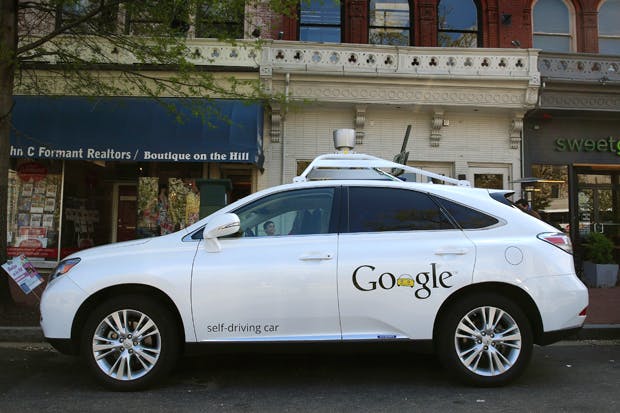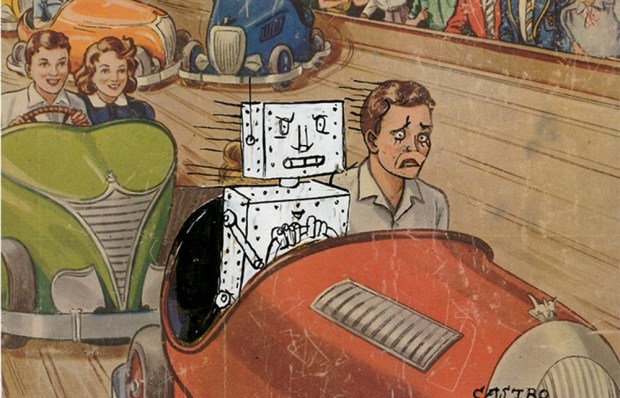A first last week: a Google driverless car in autonomous mode was partly at fault in a collision, interestingly one involving a bus. The car was merging into a lane of faster-moving traffic to dodge a pile of sandbags in a collapsed drain and nudged in ahead of the bus on the assumption that its driver would give way. He didn’t.
I suspect this may be a failure of social intelligence. Human drivers, for all their faults, can intuitively read the behaviour of other road users very well. We instinctively know that bus drivers are less likely to give way than car drivers. Understanding humans is always going to be easier when you know what it’s like to be one: in reading human emotions, even the best technology still lags far behind the typical domestic dog.
Google is currently testing its cars in California, where there are few pedestrians. It remains to be seen how they will cope with mischievous British teenagers. What is to stop people impatient to cross the street from simply walking out in front of driverless cars knowing the car will swerve to avoid them? We don’t do it now because of the risk of driver error — or rage. Will Google’s cars need to get aggressive occasionally? (Anger is nature’s way of discouraging people from dicking us around.)
Some pundits now suggest the idea of a wholly driverless car may be a case of overreach, driven more by ideology than common sense. Many of the promised gains in safety can be achieved by enhancing conventional cars, while the most irksome aspects of driving (parking, long motorway journeys, stop-go traffic) can be automated quite easily. Reaching a point where driving is 90 per cent less boring and 95 per cent safer is straightforward — akin to what already exists on aircraft. Going beyond that to a point where cars can be trusted to drive around unoccupied is much harder.
The 100 per cent driverless solution appeals to technologists because Silicon Valley, for all its wonderful experimentalism, often falls for the ‘Great Efficiency Fetish’. The lovechild of American puritanism and economic theory, this is the rarely challenged belief that life as a whole is always improved by automating and optimising all of its parts, and replacing human judgment with machine intelligence. It is a central tenet of this ideology that all efficiency gains are good: you must never ask wider philosophical questions such as ‘And this time you’ve now saved…? What will you actually do with it?’
As an example of the Efficiency Fetish at its worst, there is a start-up in San José (purpleapp.com) which, to save you visiting a petrol station, drives a tanker to your office or home to fill up your car. This is a classic example of narrow efficiency, in that it solves one problem only to create another problem somewhere else. Having magically saved five minutes because you didn’t stop at a petrol station, you will get home to find you’ve run out of milk. As any Briton knows, selling fuel is not the sole purpose of a petrol station: its principal value is as a place to buy an M&S pork pie without your wife finding out.
Picasso once said ‘Computers are useless — all they give you are answers.’ He had a point. Something about technology seems to dispose people to come up with narrowly efficient solutions to completely the wrong problem. It always strikes me as bizarre that the country which is most obsessive about time-saving technologies has never even considered the possibility of taking more than two weeks’ holiday every year. When Bernie Sanders proposed making two weeks’ paid vacation mandatory in Congress last year, he was widely denounced as a communist.
Got something to add? Join the discussion and comment below.
Get 10 issues for just $10
Subscribe to The Spectator Australia today for the next 10 magazine issues, plus full online access, for just $10.















Comments
Don't miss out
Join the conversation with other Spectator Australia readers. Subscribe to leave a comment.
SUBSCRIBEAlready a subscriber? Log in